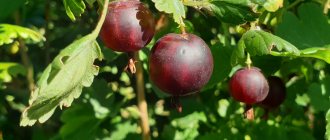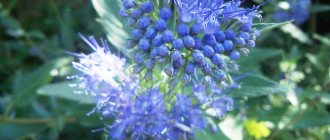Openwork species of asparagus from the asparagus family have a limitless scope for decorative use. According to the classification, there are more than 300 species of graceful plants. Such diversity allows you to create amazing compositions and mixes for interior decoration. There are hardy varieties for growing in open areas. Long framing branches look beautiful in bouquets with alstroemerias, giving a luxurious shine.
general information
The genus of asparagus is distributed literally in all climatic zones and on all continents. Although it is most often found in Asia, Europe and Africa. In some latitudes it is even grown on special plantations, but this only applies to edible varieties.
Asparagus is a perennial, but its form can be a shrub, vine or herbaceous plant. Instead of leaves on thin stems, equally thin and flexible shoots diverge. They resemble elongated needles and are called cladodes. In all external parameters, asparagus resembles a lily, but with a wide branched rhizome.
Asparagus blooms with pale small flowers, and then scarlet berries form. Moreover, the flowers are unisexual and bisexual, even within the same bush. But keep in mind that it is almost impossible to achieve flowering on the windowsill at home.
Photo: fermerss.ru
Add a comment Cancel reply
You must be logged in to post a comment.
Asparagus is an incredibly popular vegetable crop. What's the secret? Why is it so actively grown, called a miracle plant and a royal vegetable? This is what we will try to figure out.
Asparagus is an incredibly popular vegetable crop.
Asparagus, or asparagus (Asparagus) is a perennial herbaceous plant up to 1.5 m high. It can grow in one place for about 20 years, forming more than 50 shoots during this time. Feels great in the wild: you can find thickets of asparagus throughout Europe, Asia, Africa and even Siberia. It is unpretentious and cold-resistant, it can easily tolerate severe frosts (down to -30°C), although it may suffer from small (about -5°C) spring frosts.
Asparagus, or asparagus, is a perennial herbaceous plant up to 1.5 m high
This representative of the asparagus family is notable not so much for the excellent taste of the shoots as for their unique composition: they contain beta-carotene and choline, thiamine and niacin, folic and ascorbic acids, potassium and iron, magnesium and calcium, sodium, phosphorus, necessary for the human body. copper, manganese and selenium! Asparagus is a dioecious plant. Pollen is produced on male flowers. The female ones have small inedible red berries containing a maximum of two seeds that remain viable for up to 5 years.
Bright asparagus berries are inedible
An asparagus bush is a tall, highly branched stem that is divided into many small stalks. Large edible shoots grow from multiple buds located on powerful rhizomes.
Types of asparagus
Hundreds of species of asparagus differ markedly from each other in habitat and appearance. Among them there are edible varieties that are grown on an industrial scale. And there are decorative ones that decorate gardens, interiors and even bouquets or flower arrangements.
Feathery asparagus
This is a tropical African variety with climbing shoots that are highly branched. The small leaves resemble feathery scales up to half a centimeter in length. Thin cladodes stretch up to one and a half centimeters and grow in groups of up to twelve pieces. Externally, due to its specific shape, a separate shoot resembles a fern leaf.
Photo: domashniecvety.ru
Racemosus asparagus
This is a tall, beautiful and vibrant species that grows up to 2 meters. Cladodes are also collected in groups and resemble spruce needles. Flower clusters are notable not so much for their decorative properties as for their delicate, pleasant aroma.
Photo: malayalam.indianexpress.com
Crescent asparagus
The liana-shaped variety slightly resembles a succulent in the shape of its cladodes, especially during flowering. In nature, flexible creeping shoots stretch up to 15 meters, in a room - up to 4. Large long cladodes (up to 8 cm) fluff at an impressive distance from each other.
Photo: pinterest.com.au
Asparagus Sprenger
This species is also called densely flowered, because in nature it blooms with abundant loose inflorescences of white or pink color. This is a creeping shrub native to the humid African mountains. Long stems up to one and a half meters do not stretch upward, but spread along the ground.
Photo: etsy.com
Asparagus asparagus
This is a rare variety in which the cladodes do not resemble needles, but ordinary and rather large ovoid leaves. Asparagus asparagus is grown as a hanging asparagus, but if you want it to stretch upward, it needs strong support. An interesting feature of the bright orange-red fruits is their characteristic citrus smell.
Photo: o-remonte.com
Medicinal asparagus
This is the most common species in temperate latitudes, which is also called common asparagus. Herbaceous shoots can be both compact and tall - from 30 to 150 cm. The stems are smooth and densely covered with bunches of thin fibrous cladodes.
Photo: o-flora.com
Meyer's asparagus
The decorative subshrub is often grown in gardens and plots because it is lush, voluminous and bright. Tall shoots stretch up to half a meter and are covered along the entire length with small thin cladodes. Each of them remembers either a racemose inflorescence or just a fluffy brush.
Photo: dachadecor.ru
pyramidal asparagus
Another beautiful ornamental variety that stretches upward in neat bushes from half to one and a half meters. It is soft, rich, dark green in color and reminiscent of juniper. Cladodes grow densely and in one plane.
Photo: rootsbar.ru
Tradescantia (60 photos): types and features of care
Harvesting
The first food shoots appear on asparagus only in the fourth year of life. And they need to be broken out only when they begin to lift the soil crust. As a rule, harvesting begins in May, and if spring is early, then in the first ten days of April.
The first food shoots appear on asparagus only in the fourth year of life.
Carefully rake the ground where the cracks have appeared, and when you find a seedling, cut it off at the base, being careful not to damage the young shoots and rhizomes. It is necessary to cut off all the sprouts: this will only enhance the growth of new ones. The holes formed after cutting must be filled with earth again.
In the first year of fruiting, harvesting should not be extended for more than a month, so as not to further weaken the young rhizomes. The collection of seedlings from old plants should be completed by the end of June. The warmer it gets outside, the faster the asparagus begins to grow. But as soon as its shoots appear on the surface of the earth, they lose their taste, turning dark pink or purple. To prevent this, harvest twice a day: early in the morning and late in the evening. At a temperature of about +15°C, you need to harvest asparagus every 2-3 days.
In the first year of fruiting, harvesting should not be extended for more than a month, so as not to further weaken the young rhizomes.
If you use beautiful openwork asparagus to arrange bouquets, do not cut all the branches from one bush: this can have a detrimental effect on the plant. Collect the seeds only when the berries turn a deep red color.
Asparagus care
Asparagus is completely unpretentious to any conditions, so it takes root in open ground and flowerpots. It easily tolerates winter frosts and is reborn every year with warming. And all because the plant has a very powerful root system that stores enough resources.
Temperature
Asparagus will not be killed by heat or frost in moderate quantities, but they can affect its decorative properties. Make sure that in summer the temperature does not rise above 25 degrees. If a flowerpot overwinters in a warm room above 15 degrees, its leaves may periodically fly off - this is normal. The main thing is to immediately remove all dried shoots so that they do not waste resources and contribute to the development of diseases.
Photo: Michurinskoesp.rf
Lighting
Asparagus loves bright light and warmth, so feel free to move it to the east and west in the apartment. The plant does not tolerate direct rays well, but this applies to almost all indoor flowers. As summer approaches, take the flowerpot out into the fresh air, but start gradually, from several hours a day.
Photo: o-remonte.com
Watering
During the active season, water the asparagus every time the top layer dries out. It is best to do this through a pan, and the water will not stagnate in the earthen coma. In cold weather, watering is reduced to a minimum: just make sure that the lump does not dry out completely.
Asparagus loves high humidity, so it can be sprayed with a spray bottle. It's better to do this in the morning and evening, while it's not too hot. You can add damp stones or moss to the tray, or use a humidifier.
Photo: pestik-tychinka.ru
Fertilizers and fertilizing
Asparagus grows quite actively and wildly, so it requires regular feeding. During the peak season - weekly, in the fall - half as often. Fertilizers are needed even in winter, just even less often - every other month. Be sure to dilute the mixtures so that they are slightly concentrated.
Photo: rmnt.mirtesen.ru
Transplantation and propagation
Until the bush is 4-5 years old, it will have to be replanted regularly every spring. After this, you can reduce the frequency by half or three times. The asparagus rhizome is developing rapidly, so within a year it will become cramped in its pot.
You can plant new asparagus from seeds, but this method is not popular among amateur gardeners - it is time-consuming and difficult. The easiest way is to divide a large bush into a couple of parts when you replant it. You can even shorten the roots a little so that they fit in the flowerpot.
Cuttings for propagation are also prepared in the spring. Take several strong long stems about 10 cm from the bush and plant them in the sand. Then for a month and a half they need to be placed in a warm place under film in a bright sunny place. Don’t forget to water and ventilate the seedlings, and maintain the temperature around 20-22 degrees. After this, the cuttings can be planted in flowerpots and transferred to normal daily care.
Photo: avipoisk.online
Trimming
Asparagus stems should not be trimmed because they will not grow back. Their number is inherent in the root system even before growth begins, and it does not increase over time. You can't do anything about this fact - this is the nature of the plant.
Seasonal pruning is carried out when replanting at the beginning of winter. Cut off all too old, limp and weak shoots, shoots without leaves and painful stems. Then the plant will direct all its resources to the growth of young ones in order to bloom again in all its glory.
Photo: domashniecvety.ru
Kalanchoe (60 photos): types and features of care
Forcing asparagus in winter
This universal vegetable crop is successfully cultivated not only in summer, but also in winter (in greenhouses) and spring (in greenhouses). So let's talk about growing asparagus in winter and spring in more detail.
You can get asparagus in winter and early spring by forcing shoots from the rhizomes of adult 5-6-year-old plants:
- in October, the rhizomes of the plants must be dug up and stored in the basement until December, the temperature in which is maintained at a level from 0 to + 2 ° C;
- Around the beginning of December, asparagus rhizomes should be planted in a greenhouse, in small containers, pressed tightly against each other, trying to place at least 18-20 pieces per 1 m². They are covered with humus (about 20 cm) on top, the containers are additionally covered with black film;
- For the first week, the temperature in the greenhouse is maintained at about +10°C, but as soon as the roots begin to grow, it is raised to +18°C. It is necessary to maintain the temperature regime for about 2 months - the entire time the harvest lasts.
And in the comments to this question, an interesting ancient method of growing asparagus is described - steaming.
Pest and disease control
Asparagus rarely get sick, and in 99% of cases this is due to improper care. It drops its leaves due to too much light or dry air. Harsh direct rays on a hot day may cause burns and yellow edges. The only parasite found is the spider mite, which can be treated with standard insecticides or folk remedies.
Photo: domashniecvety.ru
Asparagus varieties
There is not just a large, but a huge number of types of asparagus (over 300), among which there are vegetable, medicinal and ornamental .
Asparagus varieties
In this article we will talk about vegetable asparagus and its most common varieties. We have already discussed the differences between green, white and purple asparagus.
Variety 'Snow Head'
One of the most popular is the mid-early variety 'Snow Head'. Small shoots are distinguished by a pointed greenish-cream loose head. The pulp is very tender, tasting like green peas.
Mid-early variety 'Snow Head'
Variety 'Glory of Brunswick'
A popular late variety, one of the few whose juicy white shoots are good for canning.
Variety 'Glory of Brunswick'
The peculiarity of the variety is not only the highest taste of the shoots that are resistant to greening, but also their large quantity.
Variety 'Argentelskaya'
It is distinguished by large, low-fiber white shoots with slightly splayed head scales. Variety 'Argentelskaya'
It is valued for its long period of formation of shoots, suitable for both canning and fresh use.
Asparagus – photo
Asparagus in a room or in a garden is primarily a spectacular ornamental plant. In our latitudes, many people do not know about it and, as a result, underestimate it. Completely in vain!
Photo: no.pinterest.com
Photo: commons.m.wikimedia.org
Photo: dev-gardenstylesanantonio.com
Photo: 2sotki.ru
Photo: doflowers.ru
Photo: fruitree.ru
Photo: zumipic.com
Photo: serissa.ru
Photo: pinwc.com
Photo: vita-animal.ru
Photo: ecobeltex.ru
Photo: datchnik.ru
Photo: whatflower.ru
Photo: mirata.lt
Photo: pulse.mail.ru
Photo: pinterest.fr
Photo: o-remonte.com
Photo: domashniecvety.ru
Photo: sunhome.ru
Photo: agronom-world.ru
Photo: domashniecvety.ru
Photo: 1poin.com
Dracaena (70 photos): types and features of care
Description of the plant
Asparagus (Asparagus) is a perennial plant . Previously, this representative of the flora belonged to the Liliaceae family. But, at the moment, asparagus crops are classified as a separate family. Therefore, Asparagus now belongs to the Asparagaceae family.
It grows actively in Europe, Siberia, the Caucasus, China, Australia, the USA, and on the Mediterranean coast. It can be a spreading subshrub, emerald grass or vine. The branches of Asparagus reach a height of more than 150 cm. They are endowed with small flattened branches with bunch-shaped cladodes.
Cladodes are located on stems and scale-like leaves. The leaves are miniature, underdeveloped or completely absent. There are hard spurs on the trunk. The plant has a well-developed root system.
Features of reproduction
Crescent asparagus can be propagated in three ways:
- By cuttings - cuttings can be rooted either in a moist substrate or simply by placing them in water. If rooting is carried out in moist soil, roots may appear in the second month. After the roots have become stronger, the asparagus is transplanted into a pot.
- By dividing the bush - suitable only for an old plant whose root system is well developed.
- Using seeds is a fairly simple method, although it is used very rarely. The seeds are sown in river sand, covered with film and left in a cool place. In a month the shoots will appear.
From the history of appearance
The history of asparagus cultivation goes back more than three thousand years. The Egyptians considered asparagus divine and were firmly convinced that the plant had a great influence on the continuation of the human race.
The ancient Greeks even put asparagus sprouts in the bed of newlyweds so that they could quickly conceive a child.
Decorative asparagus looks very unusual
During the times of Ancient Rome, the plant ceased to be used exclusively as a ritual attribute and began to be actively consumed as food. For a long time, the vegetable was not available to commoners and was served only at the table of the Roman emperor. When the product came to Europe in the 15th century, it was also unavailable to mere mortals for a long time.
Important! In the modern world, although there are still people who do not know that asparagus and asparagus are, in principle, the same plant, growing asparagus in the garden is quite common. Anyone can serve asparagus at the table.
Use in cooking
Having understood that asparagus and asparagus are always the same plant, you should familiarize yourself with how the plant is used correctly for preparing various dishes.
Asparagus has excellent taste, which is why it is widely used in cooking. It is used in food both raw and cooked. The plant can be boiled, fried, baked and canned. The green variety is used more often for cooking. The easiest way to cook is from young shoots. They do not need to be skinned. In addition, they require a minimal amount of time to bake. If we talk about how to cook white asparagus, the vegetable requires preliminary preparation before it is used in the cooking process. It must be thoroughly washed in cold water and all dense bases must be cut off.
Many people don't buy asparagus without knowing how to prepare it. Asparagus goes well with any vegetables, fish, poultry, meat, cheese, and can be used as a side dish or as a main dish.
Important! Asparagus shoots, depending on the type of processing, are cooked for different amounts of time. Boil asparagus for 8 minutes, steam for 15 minutes, fry for 5 minutes, bake for 20 minutes. Almost any spices can be used as companions.
Room representatives
Indoor types of asparagus take root well at home . Such plants can grow in deep pots, wide bowls on windowsills. They are mainly installed next to windows or in bright, spacious loggias.
The soil for such plants is chosen to be neutral or slightly acidic. Fertilizers are applied along with watering. Watering is carried out as the top layer of soil dries. As for the diseases to which asparagus is susceptible and pests, detailed information can be found here.
The main indoor subspecies include:
Meyer's asparagus (Asparagus meyeri) is a variety of asparagus that is a small shrub. Grows throughout Asia. It reaches a height of no more than 40-50 cm. It has a branched structure, growing up to 6 m in width. The side shoots are cladodes. Due to the convenient location of the ovaries, this representative of the flora was nicknamed the “fox tail”.
Asparagus plumosus is an evergreen perennial. It has graceful curly branches. The leaves look like miniature scales. The stems are curved and are phylloclades growing in the form of bunches. The flowers are miniature, snow-white. After flowering, blue-black fruits are formed.
Crescent asparagus (Asparagus falcatus) is a vine or subshrub with climbing stems. With good care, it reaches a height of 5-7 m. It has woody branches with small thorns in the form of hooks. With their help, the plant clings to supports and climbs towards sunlight. This representative of the flora grows in the mountainous areas of Asia.
Sprenger's asparagus (AsparagusdensiflorusSprengeri) is a subshrub with branched stems. It reaches a height of 40-50 cm. The shoots of the plant are elongated, reaching 1.5 m. They form narrow-lanceolate cladodes of an emerald hue. The leaves are miniature and scaly. The plant blooms with miniature snow-white flowers collected in paniculate inflorescences. After flowering, oval fruits of a burgundy hue are formed.
Asparagus is a prominent representative of the Asparagus family, which has recently often been classified as a separate genus Asparagus. This plant is successfully grown in garden conditions. Some types of it are used in cooking.











